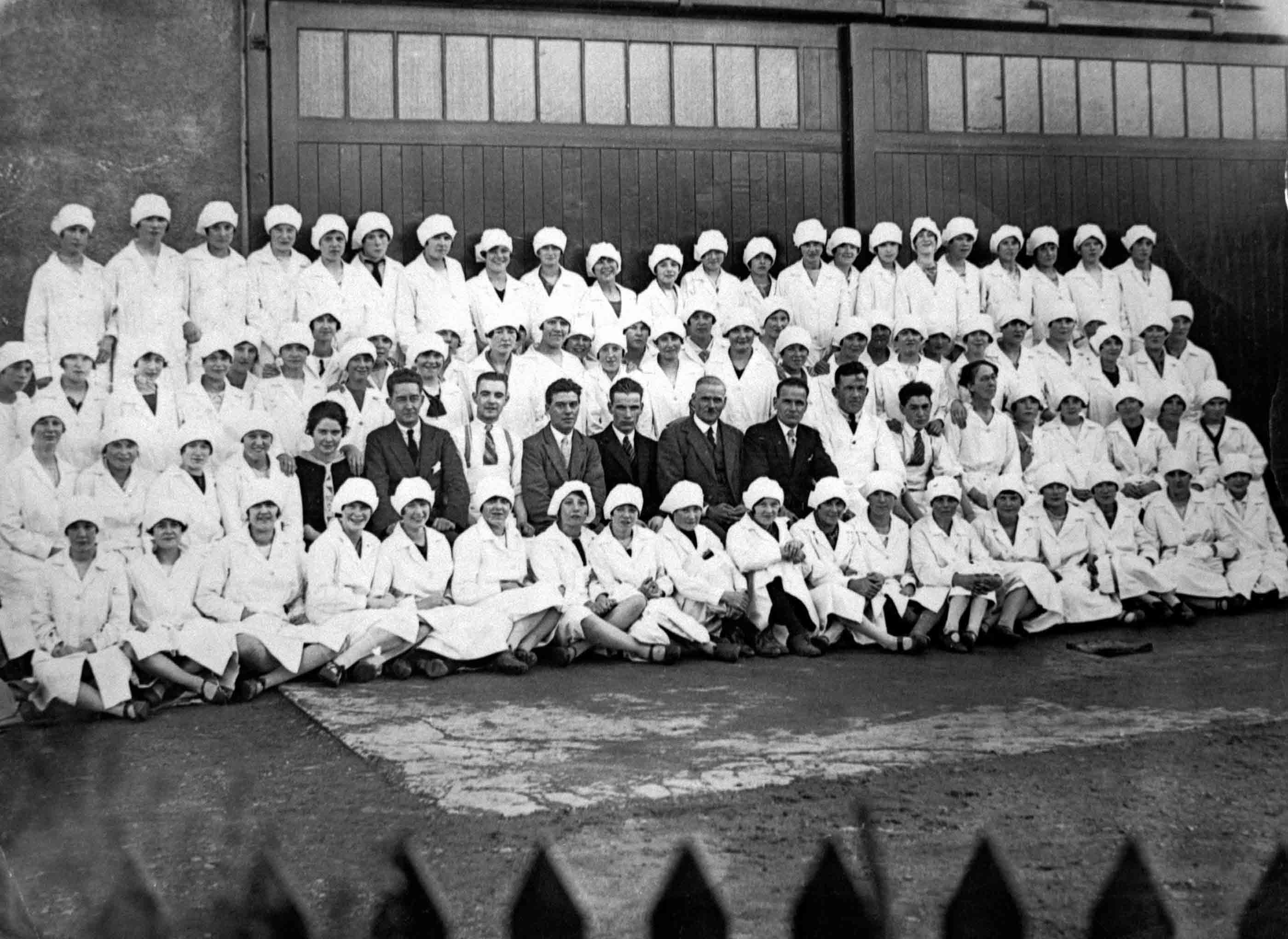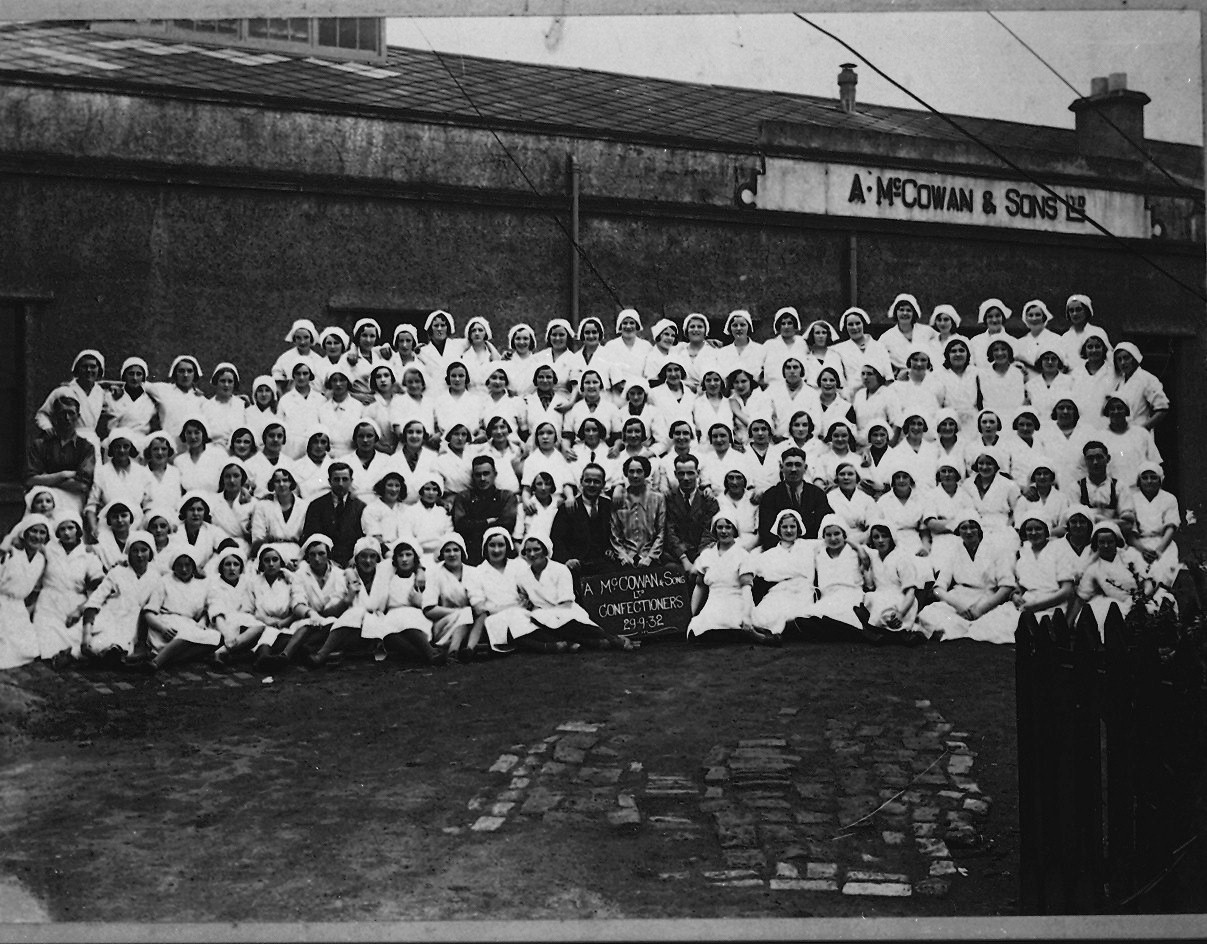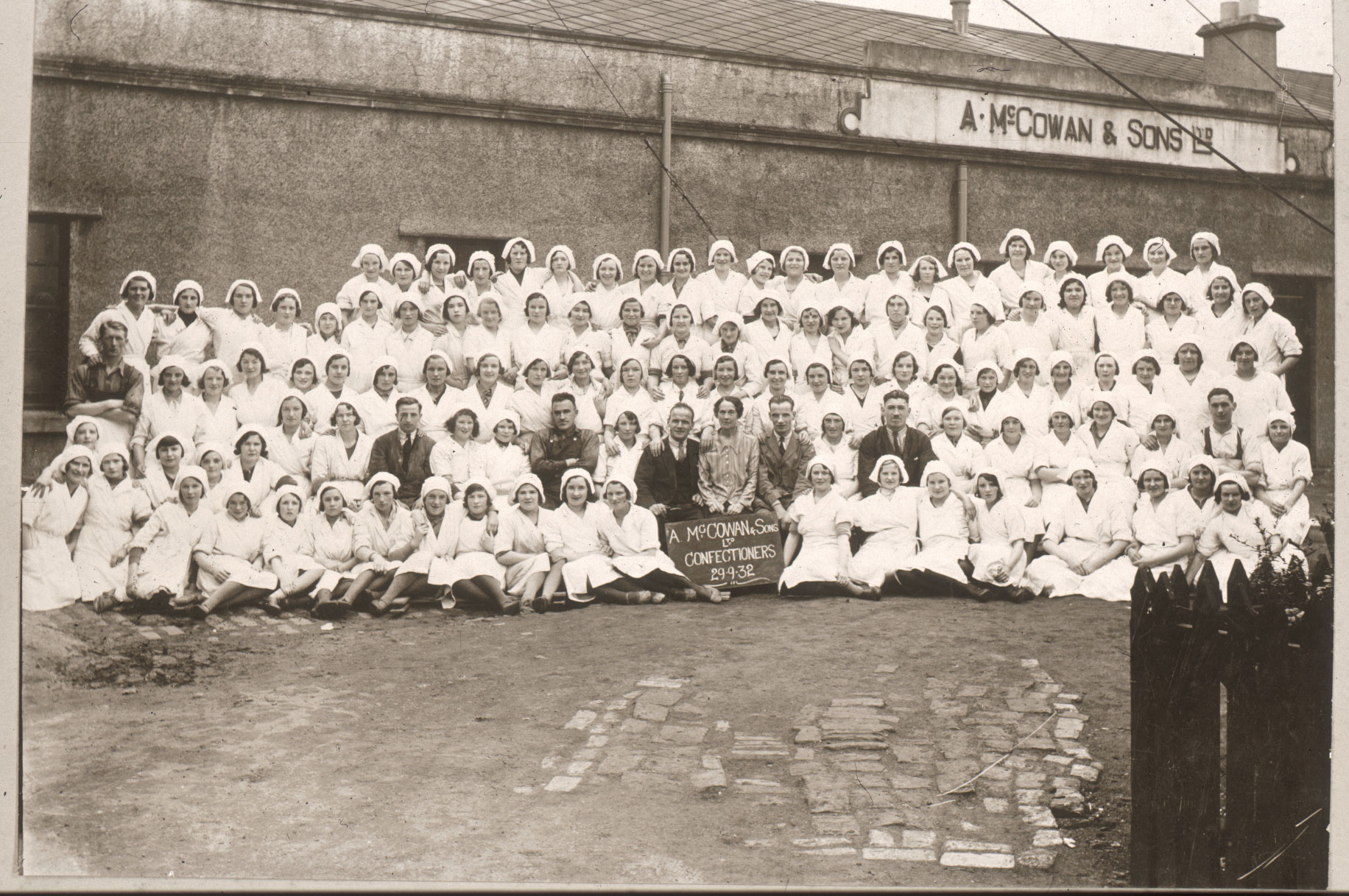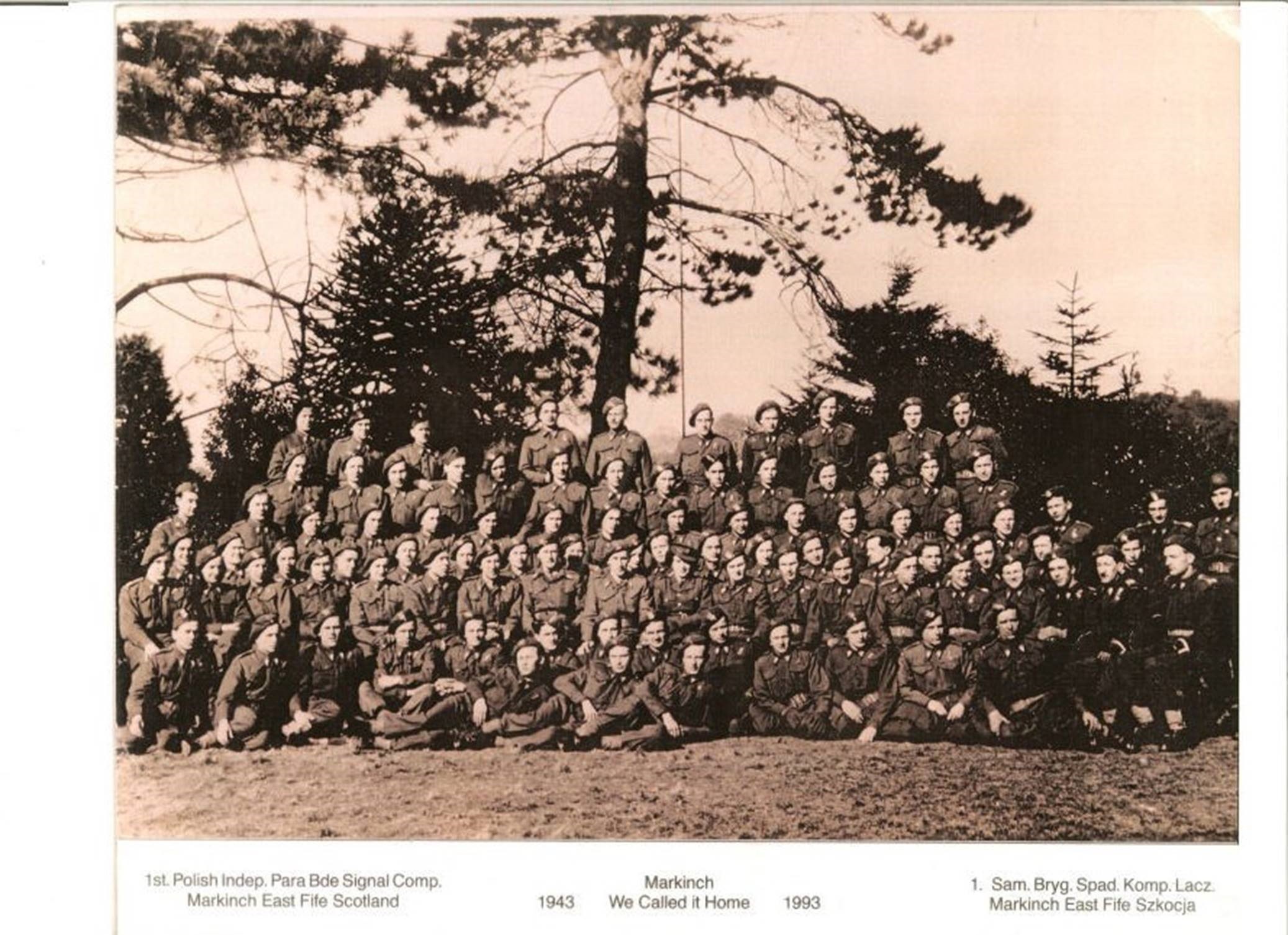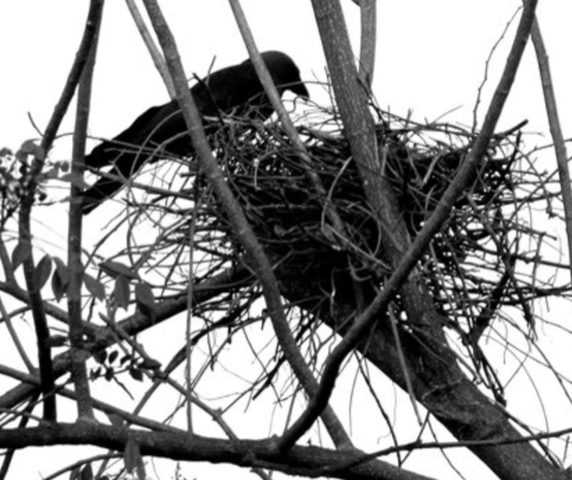Women made up the majority of workers at McCowan’s toffee factory in Stenhousemuir. This story explores the history of women in factories and how they made the iconic Highland Toffee bars.
Women in Factories
When thinking of women working in factories, I imagine many of you will immediately think of women working in munitions factories during the First World War, and the dangerous jobs they had to do there – especially the so-called “Canaries” working with explosives and chemicals that turned their skin a yellow colour. But women have a history of working in factories that isn’t just focused on this time period. If you visit any social history museum and look at sections on working lives, there are always stories of women working in factory conditions, particularly in the cotton and textile industries.
A strong Scottish example of this would be the Templeton’s Carpet Factory in Glasgow. The factory, at Glasgow Green, is known for its stunning exteriors, but during its construction, disaster stuck. On the 1st November 1889, high winds caused a section of the new brick façade to collapse onto the weaving sheds that it had been designed to hide. Unfortunately, there were workers inside at the time, primarily female, and 29 women were killed (Glasgow Women’s Library). A memorial to these can be found outside the Calton Heritage and Learning Centre, in Glasgow (Thenue Communities Memorial Garden). The above is just a brief introduction to the history of women working in factories. The rest of this piece will focus on McCowan’s and the staff there.
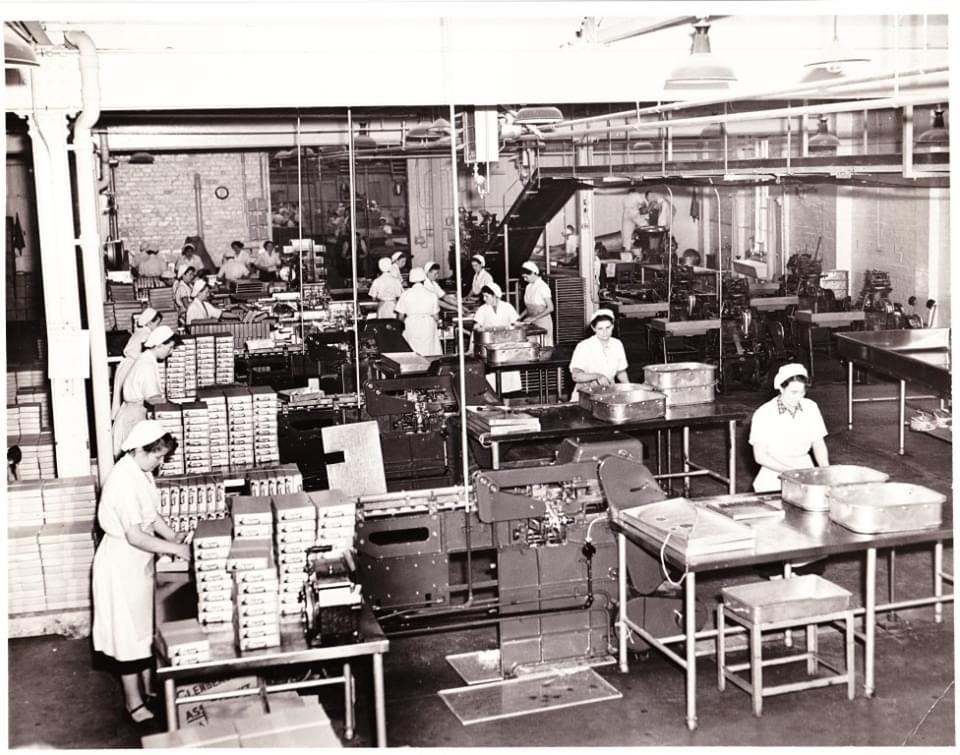

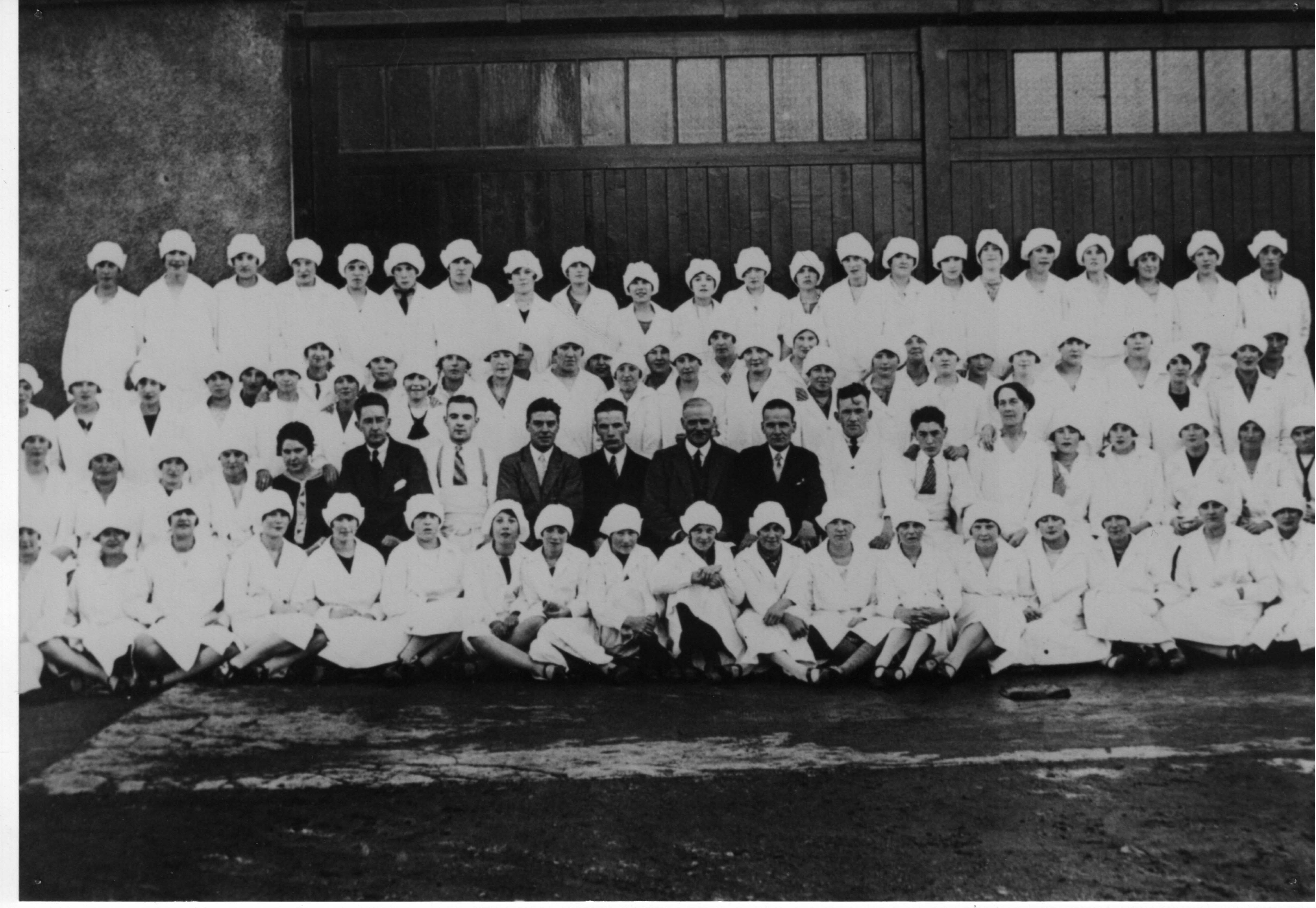

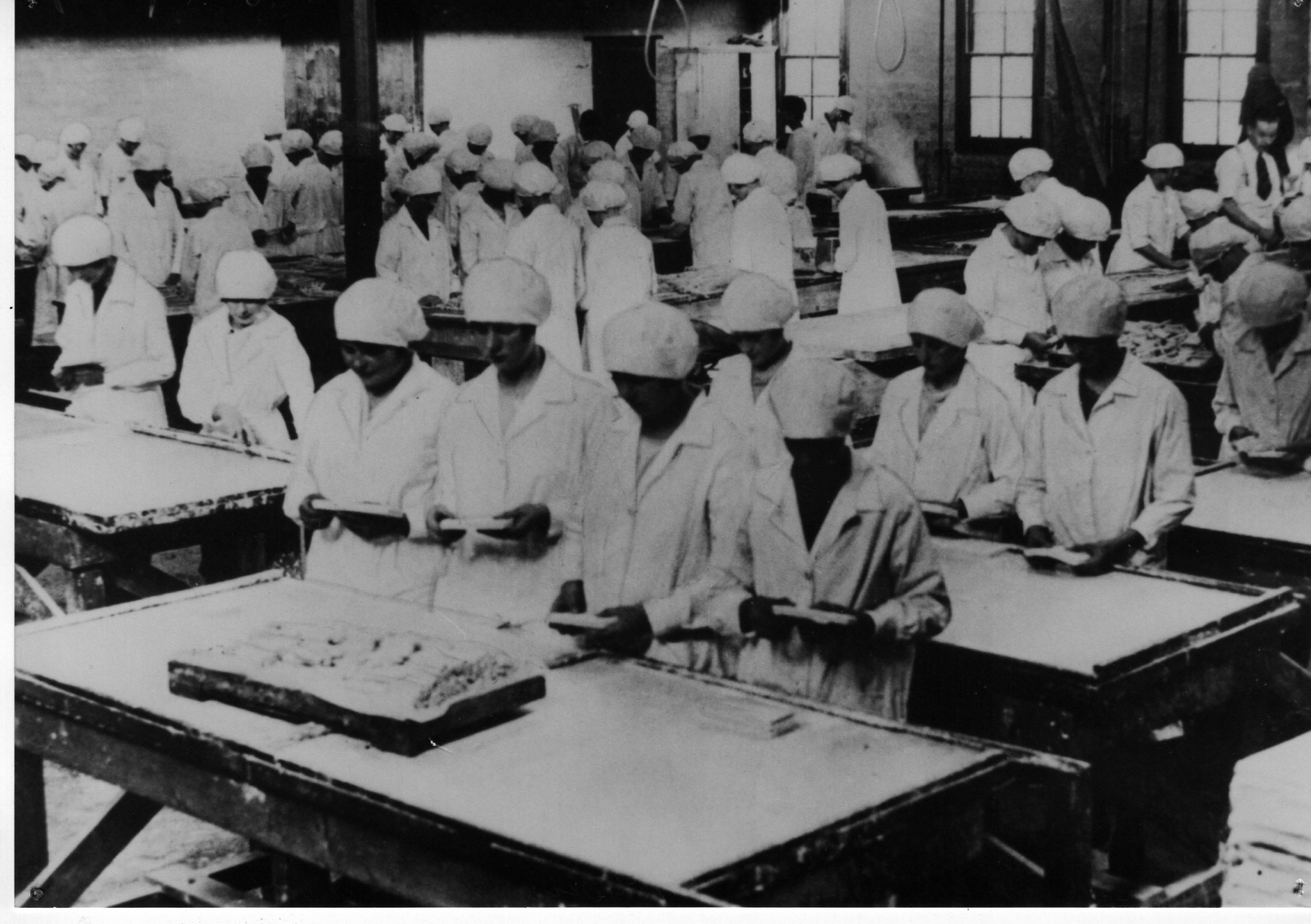

Women at McCowan’s
Almost every image you see of staff from McCowan’s has something striking: the majority of the staff are female. Even more striking is their white uniform: white overcoat and white hat.
Initially, Mr. A McCowan began manufacturing sweets in 1919, where he worked out of a small premise in Rae Street, Stenhousemuir. An article from the Falkirk Herald states that at this point he was only employing ‘3 girls’ (28/12/35, p.36). However, the business became more popular, which meant the need for McCowan to expand, and a new building was taken over in 1924. This expansion also meant that more up-to-date machinery could be purchased – which meant that confectionary could be made faster and cheaper. You can read our “McCowan’s Machinery” story to learn more about this. The Falkirk Herald article states that all of this expansion had “put the firm in the forefront of manufacturing confectioners in Scotland” (28/12/35, p.36).
Bigger premises and higher outputs also meant that the number of staff had to increase. By the end of 1935, the number of females employed in the factory was 115 (Falkirk Herald, 28/12/35, p.36). Interestingly, the company also had a fleet of vans used to order their sweets, which, the article implies, were driven by men. Including the drivers and mechanics, the total staff numbers in 1935 stood at 150 (Falkirk Herald, 28/12/35, p.36). The women were primarily engaged in making, wrapping, and packing the sweets.
Making Toffee
Newspaper articles about McCowan’s give you an insight into the work that these women were doing. Ingredients for the various sweets are weighed at one end of the factory, and placed into pans. The pans are then fitted with internal stirrers, and the ingredients are churned to the desired consistency, before being poured out onto long metal tables.
The toffee is rolled out to the required thickness, and then left to cool and harden, before being cut.
fields['text']) echo $section->fields['text']; ?>
In the 1935 article, focus is also given to the coloured rock that was made there. Slabs of coloured toffee are placed into a machine which rolls them to the required diameter. This is then spun by “deft-fingered girls” so that the colours run in spirals (Falkirk Herald, 28/12/35, p.36). Lengths of this are then cut off and wrapped up. You can practically see the colours swirling, when you read this article!
Another newspaper article, from nearly twenty years later, shows us some wonderful images of women workers in the factory, and working with the various machines required for production (Falkirk Herald, 18/12/54, p.5). It’s all fine and well reading about these tasks, but getting to see images makes them all the more real. Again, their neat white overalls are shown, and are mentioned within the article accompanying – highlighting what an important part of the image they are. You can see them working on making toffee – from pouring it, to wrapping bars of it.
At this time, it was claimed that McCowan’s made 17 miles of toffee each working day (Falkirk Herald, 18/12/54, p.5). The text here is quite fanciful in its descriptions, referring to the female workers as “the fairy godmothers who supervise the transformation scene” (Falkirk Herald, 18/12/54, p.5). It is these women who turned the ingredients into the toffee and sweets that everyone loves. Interestingly, we are also told here that if a woman felt like eating a piece of toffee whilst she was working, then that was completely fine. Many people also have memories of their relatives, who worked in the factory, bringing home bags of broken pieces of toffee at the end of the working day, which sounds like a real treat!
Past the mid-1950s, I don’t have much information about those who were working in the factory. We would all love to hear stories and memories from those who were working in the factory in this time, so if you have any, do get in touch!
By Louise Bell, Great Place volunteer.
To share memories please contact [email protected]
